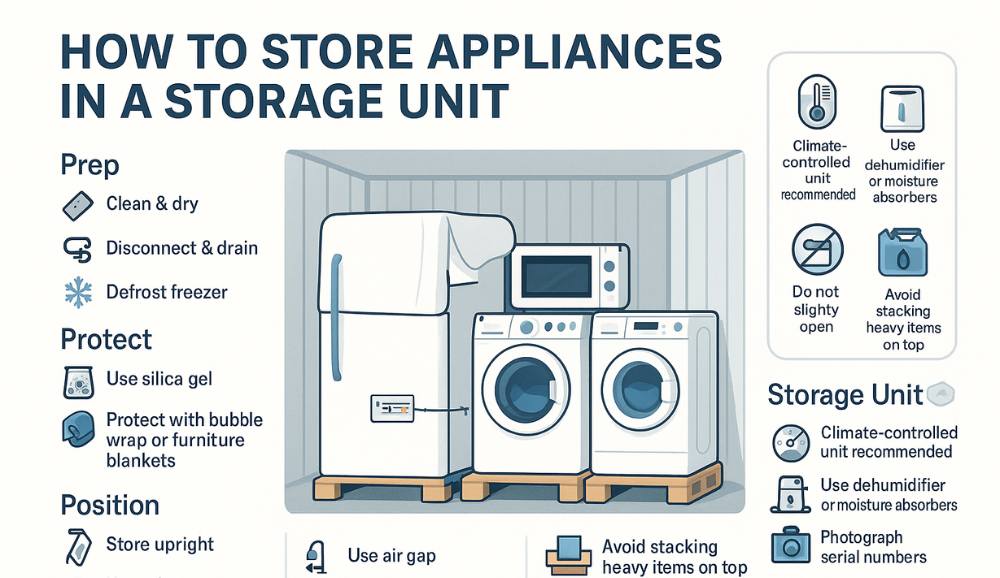Your appliances deserve special attention when they’re placed in storage. Why? Here are the quick facts:
- Appliances are expensive to repair (and replace).
- Store appliances instead of selling them, and you don’t have to buy new ones later.
- Store appliances the right way, and you won’t have to repair them later, either.
- Appliances get gross with use, so they need deep cleaning before storage.
- And before storage, they may also need minor disassembly.
- Importantly, you’ll need help from others for the loading, unloading, and transport.

